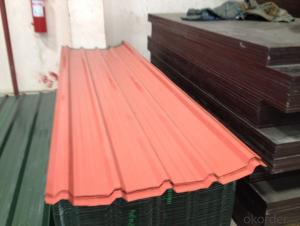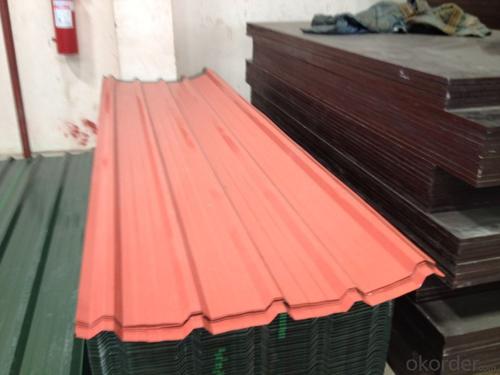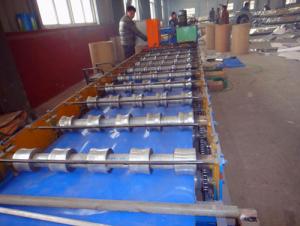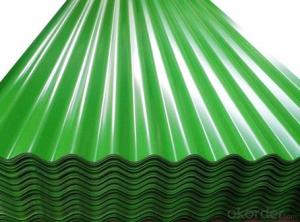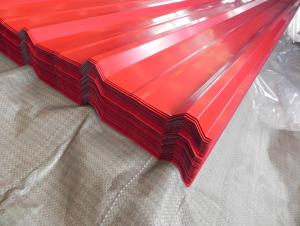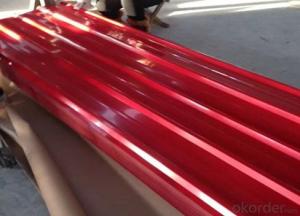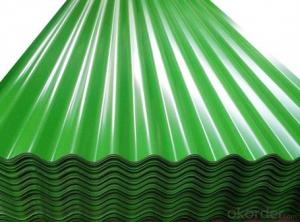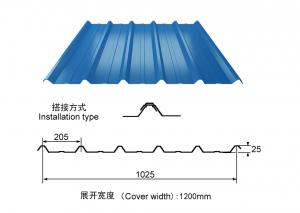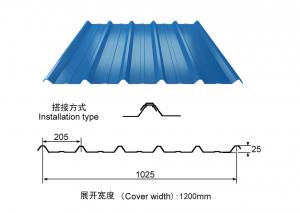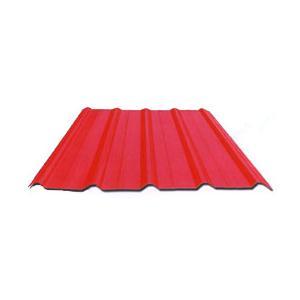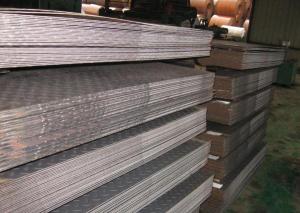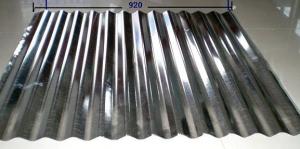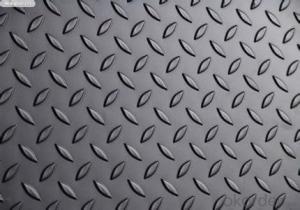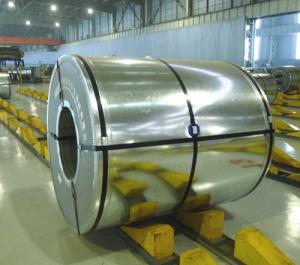Color coated corrugated steel sheets for roofing
- Loading Port:
- Shanghai
- Payment Terms:
- TT OR LC
- Min Order Qty:
- 2 m.t.
- Supply Capability:
- 200000 m.t./month
OKorder Service Pledge
OKorder Financial Service
You Might Also Like
1) AVAILABLE DESIGNATION OF (Prepainted galvanized steel coils) printed PPGI coils
Quality Q/BQB 440-2003 JIS G3312-1994 EN 10326-2004 ASTM A653-02a
EN 10327-2004 (BASE PLATE)
(BASE PLATE)
Commercial Steel TDC51D CGCC DX51D+Z/AZ CS Type A/B/C
Forming Steel (TSt01,TSt02,TSt03) CGCD1 FS Type A, Type B
Drawing TDC52D /TDC53D - DX52D+Z/AZ DDS TYPE A/C
Steel DX53D+Z/AZ
Structural TS280GD(TStE28) CGC400 S280D+Z/AZ SS275
Steel TS350GD(TStE34) CGC440 S350D+Z/AZ SS340 Class1
2) OUR SPECIFICATION OF (Prepainted galvanized steel coils) printed PPGI coils
Available Size:
Manufacturer Thickness Width Length of plate Inner diameter of coil
JIANGSU HUIYE STEEL SHEET CO.,LTD 0.2-1.2mm 800/914/1000/1200/1219/1250mm 1000-6000mm 508mm/610mm
Coated Mass OF (Prepainted galvanized steel coils) printed PPGI coils:
Base plate Available Coated Mass(g/m^2)
Galvanized Steel 80, 100, 120, 160, 180
Galvalume Steel 50, 70, 150
Available Painting OF (Prepainted galvanized steel coils) printed PPGI coils:
Category of Painting Item Code
Polyester PE
High-durability polyester HDP
Silicon modified polyesters SMP
Polyvinylidene fluoride PVDF
Easy-Cleaning —
Painting Thickness Top side: 20+5microns;
Bottom side: 5~7microns.
Color System Produce according to RAL Color System or as per buyer’s color sample.
Painting structure Top surface Bottom surface
Primer coating No coating 1/0
Primer coating Primer coating 1/1
Primer coating + Finish coating No coating 2/0
Primer coating + Finish coating Primer coating or single back coating 2/1
Primer coating + Finish coating Primer coating + Finish back coating 2/2
- Q: Can steel sheets be used for water-resistant applications?
- Yes, steel sheets can be used for water-resistant applications.
- Q: What are the tolerances for steel sheets?
- The tolerances for steel sheets can vary depending on the specific industry and application. Generally, the tolerances for steel sheets include dimensions such as thickness, width, and length. These tolerances are typically specified in industry standards or customer requirements and can range from tight tolerances for precision applications to more lenient tolerances for general use. It is important to consult the relevant standards or specifications to determine the specific tolerances for steel sheets in a given situation.
- Q: What is the difference between a smooth and embossed steel sheet?
- A smooth steel sheet has a flat and even surface, while an embossed steel sheet has a textured or raised pattern on its surface.
- Q: Are steel sheets resistant to scratching or abrasion?
- Yes, steel sheets are generally resistant to scratching and abrasion due to their high strength and durability. However, the degree of resistance may vary depending on the specific type of steel and the conditions in which it is used.
- Q: How are steel sheets protected against corrosion?
- Steel sheets are protected against corrosion through various methods such as applying a protective coating like zinc or paint, using galvanization, or employing techniques like electroplating or hot-dip galvanizing. These protective measures create a barrier between the steel and the corrosive elements in the environment, preventing rust and corrosion from occurring.
- Q: What are the properties of deep drawing properties in sheet steel?
- If the performance is different on the plane, the ear will appear. On the thickness of the performance is not good, there will be leakage phenomenon. Generally, deep drawing properties are indicated by R values.
- Q: Can steel sheets be used for manufacturing agricultural equipment?
- Yes, steel sheets can be used for manufacturing agricultural equipment. Steel is a strong and durable material that can withstand the harsh conditions and heavy-duty requirements of agricultural machinery. It provides the necessary strength, stability, and longevity required for equipment such as plows, cultivators, harvesters, and trailers. Additionally, steel can be easily fabricated and shaped into various forms, making it versatile for different agricultural equipment designs and applications.
- Q: Are steel sheets suitable for manufacturing elevator doors?
- Yes, steel sheets are suitable for manufacturing elevator doors. Steel is a popular choice for elevator doors due to its strength, durability, and aesthetic appeal. Steel sheets offer the necessary strength and rigidity required for elevator doors, ensuring safety and security. Additionally, steel is resistant to wear and tear, corrosion, and fire, making it a reliable material for elevator doors. Steel sheets can also be easily customized and finished to meet various design requirements, allowing for a wide range of styles and finishes. Overall, steel sheets provide the necessary qualities for manufacturing elevator doors, making them a suitable choice for this application.
- Q: Can steel sheets be used for insulation in buildings?
- No, steel sheets cannot be used as insulation in buildings. Steel is a highly conductive material, meaning it allows heat to pass through it easily. Insulation, on the other hand, is designed to resist the flow of heat, keeping the interior of a building warm in winter and cool in summer. Materials such as fiberglass, foam, or cellulose are commonly used for insulation as they have low thermal conductivity.
- Q: How do steel sheets perform in extreme weather conditions?
- Steel sheets perform well in extreme weather conditions due to their high strength and durability. They are resistant to corrosion, fire, and can withstand intense winds, heavy rain, and extreme temperatures. Additionally, steel sheets have excellent structural stability, making them suitable for use in various applications, such as roofing, cladding, and construction, even in harsh weather environments.
Send your message to us
Color coated corrugated steel sheets for roofing
- Loading Port:
- Shanghai
- Payment Terms:
- TT OR LC
- Min Order Qty:
- 2 m.t.
- Supply Capability:
- 200000 m.t./month
OKorder Service Pledge
OKorder Financial Service
Similar products
Hot products
Hot Searches
Related keywords
